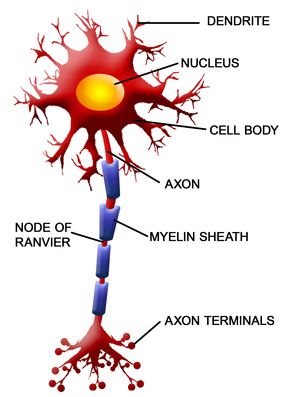New understanding of nerve repair could lead to future treatment
By Margaret Rogers
New understanding of the mechanism by which the cells that insulate the nerve cells protect and repair damage  caused by trauma and disease has be reached through a new research study.
caused by trauma and disease has be reached through a new research study.
The study was conducted by the Peninsula College of Medicine and Dentistry, University of Exeter in collaboration with researchers from Rutgers University, Newark and University College London.
The researchers found new understanding of ‘Schwann cells’ which are responsible for protecting and repairing the damage caused through trauma and other diseases. These cells are situated in the peripheral nervous system.
The full findings can be found the on-line publication of Journal of Neuroscience. They are particularly exciting because they could lead to future therapies for this type of repair and improvement of damage to the peripheral nervous system.
The peripheral nervous system is responsible for the regulation of almost every aspect of how our body functions, from carrying sensory information such as feeling the warmth of a fire and motor information which causes us to move our bodies. Its importance also reaches to the control of the functions of all our bodily organs.
Although nerve damage commonly occurs as a result of trauma, it can also occur in diabetic neuropathy which is suffered by almost half of those with a diagnosis of diabetes and patients with common inherited conditions such as Charcot-Marie Tooth (CMT) disease. Nerve damage can result in a wide range of symptoms which include loss of feeling in the hands and feet and problems with blood pressure regulation, digestion problems, sexual function difficulties and problems with bladder control.
Insulation of the nerves is provided by the Schwann cells by means of a myelin sheath, for the nerve cells which carry electrical impulses to and from the spinal cord. Because of their plasticity they are able to revert back to an immature ‘repair’ cell to repair damage to the peripheral nervous system. Although the ability to repair is remarkably good, incomplete repair which can be caused through the severance of a nerve, may mean long-term loss of function and pain and long-term disability.
Currently there is no therapy for CMT patients who may already have long-term damage and the death of Schwann cells and nerve cells. The researchers are hopeful that their work in understanding the ability of Schwann cells to revert back to an immature state and stimulate repair will mean future therapies could be developed to improve damage from severe trauma and also to break the cycle of damage caused through CMT. They also believe there is the potential to improve the repair of damage caused through diabetic neuropathy.
Professor David Parkinson of the University of Exeter said ‘The findings of our research are exciting because we have pinpointed and are understanding the mechanism by which our bodies can repair damage to the peripheral nervous system. With further investigation, this could well lead to therapies to repair nerve damage from trauma and mitigate the damage which relates to common illnesses, such as CMT.’





